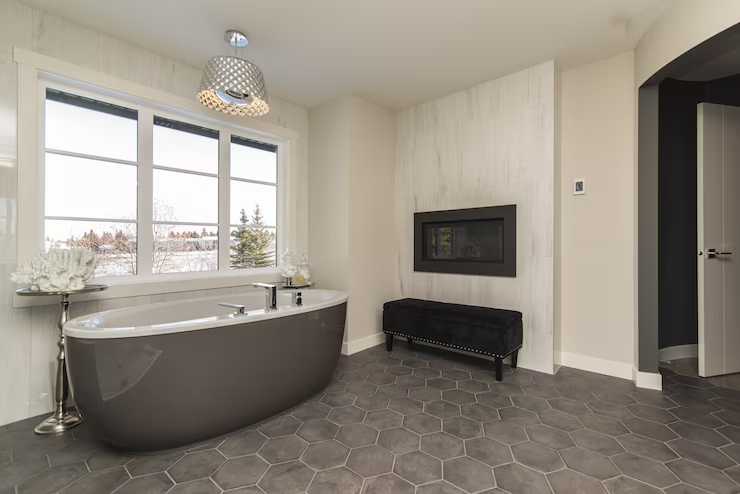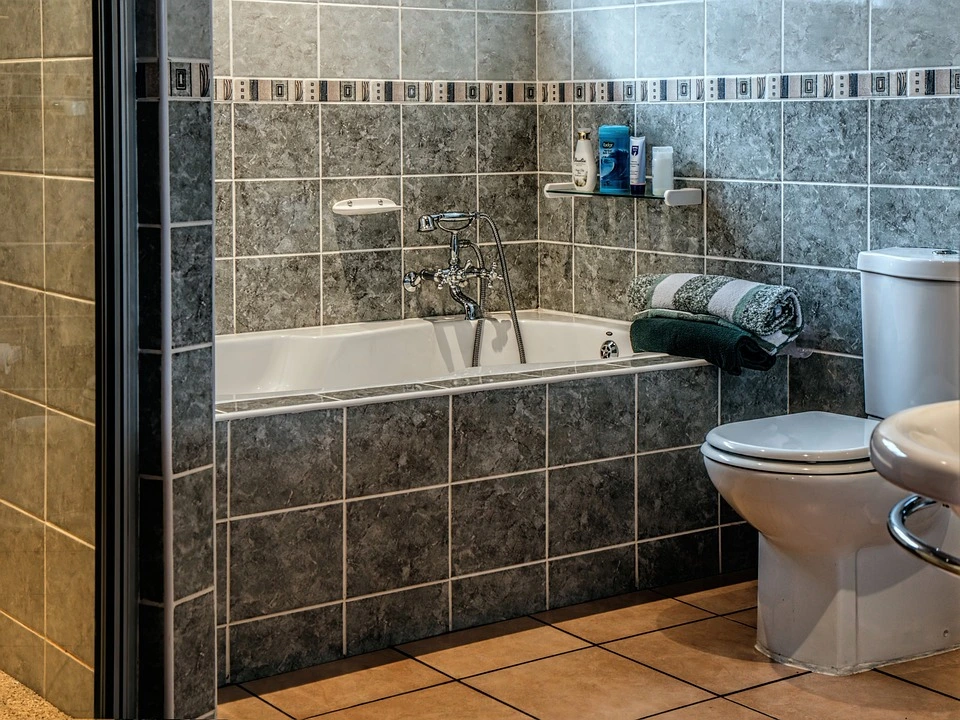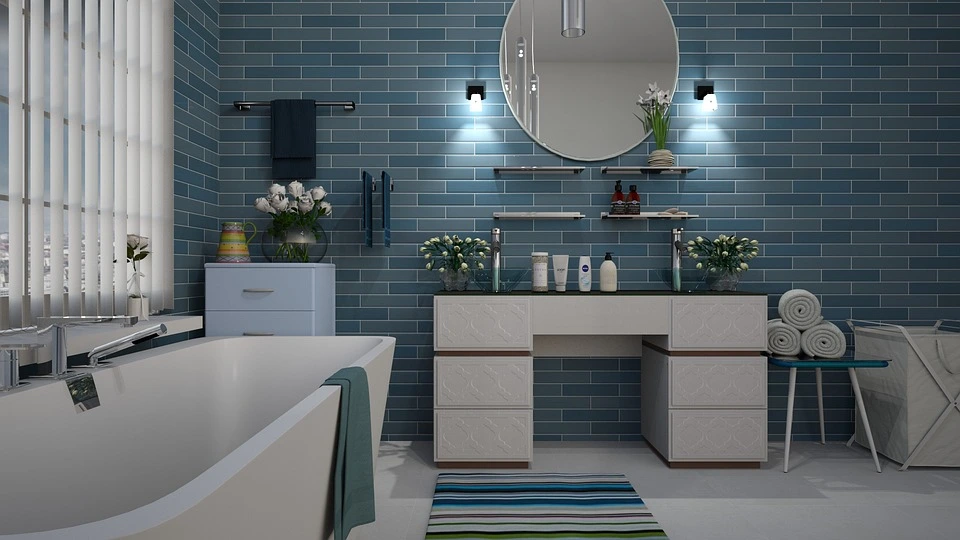When it comes to renovating or upgrading your bathroom, two popular choices for walls and surfaces are tiling and using panels. Each option has its advantages, and both can transform your bathroom into a stylish and functional space. But if budget is your primary concern, you might wonder: what is cheaper, filing a bathroom or using panels? This post covers every aspect of this comparison. It uses simple language. The goal is to help you choose wisely.
What is Bathroom Tiling?
Bathroom tiling means laying individual tiles. These tiles are made from ceramic, porcelain, or natural stone. They can be placed on walls, floors, or both. These tiles are held in place with adhesive and sealed with grout to create a waterproof and durable surface.
Benefits of Bathroom Tiling
- Long-Lasting: Tiles, especially those made from porcelain or natural stone, are incredibly durable and can last for decades.
- Beautiful Designs: Tiles come in various colors, patterns, and textures, giving you endless options to match your style.
- Water Resistance: When properly installed, tiles are great at keeping water out, which is essential in bathrooms.
Drawbacks of Bathroom Tiling
- Expensive Installation: Tiling usually requires skilled professionals, which increases costs.
- Takes More Time: Installing tiles is a detailed process that can take days or even weeks.
- Higher Upfront Costs: Both the tiles and the installation can be costly.
What Are Bathroom Panels?
Bathroom panels are large sheets made of materials like PVC, acrylic, or composite. These panels cover walls quickly. They are efficient and easy to install. They offer a simple solution for bathroom surfaces.
Benefits of Bathroom Panels
- Affordable Option: Panels are often cheaper than tiles, both in terms of materials and installation.
- Easy to Install: Most panels are DIY-friendly, meaning you can save on labor costs.
- Low Maintenance: Panels have a seamless design, so there are fewer joints for dirt and mold to collect.
- Fast Installation: Installing panels takes significantly less time compared to tiles.
Drawbacks of Bathroom Panels
- Limited Styles: While there are several options, panels don’t offer the same variety as tiles.
- Not as Durable: PVC panels might not hold up as well over time compared to tiles.
- Less Luxurious Look: Panels may lack the premium feel that tiles provide.

Cost Comparison: Materials
The cost of materials can significantly affect your decision. Let’s break down the price ranges:
Tiling Costs
- Ceramic Tiles: $1 to $5 per square foot.
- Porcelain Tiles: $3 to $10 for each square foot.
- Natural Stone Tiles: $7 to $15 per square foot.
Panel Costs
- PVC Panels: $5 to $10 per square foot.
- Acrylic Panels: $10 to $15 per square foot.
- Composite Panels: $15 to $25 per square foot.
Summary: PVC panels are usually the most cost-effective option for budget-conscious renovators.
Cost Comparison: Installation
Installing Tiles
Professional installation is usually needed for tiling. The cost is $5 to $15 per square foot, depending on the job’s difficulty.
Installing Panels
Panels are much easier to install, and many homeowners choose to do it themselves. Professional installation costs typically range from $2 to $5 per square foot.
Summary: If you’re looking to save on installation costs, panels are the better choice.
Durability and Lifespan
Tiles and panels vary greatly in durability and lifespan:
- Tiles: High-quality tiles, when maintained properly, can last 20 years or more. They are resistant to scratches and dents, making them ideal for long-term use.
- Panels: Panels are less durable and typically have a lifespan of about 10 to 15 years. Over time, they may show wear and tear, especially in high-use bathrooms.
Summary: If durability is your priority, tiles are a better long-term investment despite their higher initial cost.
Maintenance Needs
Both tiles and panels require maintenance to keep them looking good, but the level of effort differs:
- Tiles: Cleaning tiles can be time-consuming, especially when grout lines get dirty or develop mold. Regrouting may be required every few years.
- Panels: Panels are low maintenance. Their smooth and seamless surface is easy to wipe clean, and they are less prone to mold growth.
Summary: Panels are a hassle-free option for homeowners who prefer minimal maintenance.
Water Resistance
Water resistance is key for bathroom surfaces:
- Tiles: Tiles are water-resistant but depend on proper grout sealing. If the grout is damaged, water can seep through and cause issues.
- Panels: Panels provide excellent water resistance due to their seamless design. There are no gaps for water to penetrate, making them highly effective against moisture.
Summary: Panels have an advantage over tiles in terms of water resistance, especially for DIY installations.

Style and Design Options
Looks matter a lot in bathroom renovations:
- Tiles: Offer a wide variety of colors, patterns, and finishes, from glossy to matte. They provide the flexibility to create unique and intricate designs.
- Panels: While panels have fewer design options, they are available in styles that mimic tiles, stone, or wood. However, they might not have the luxurious feel of real tiles.
Summary: Tiles win in the style department due to their versatility and premium appearance.
Environmental Impact
The environmental impact of tiles and panels varies:
- Tiles: Depending on the material, tiles can be eco-friendly. Ceramic and porcelain tiles are often made from natural resources, while some manufacturers offer recycled options.
- Panels: PVC panels are less eco-friendly due to the use of plastics. Composite panels may be more sustainable if they incorporate recycled materials.
Summary: Tiles are generally a more sustainable choice, especially if sourced responsibly.
Final Cost Breakdown
For a standard 100-square-foot bathroom, the total cost comparison would look like this:
- Tiling: The cost of ceramic tiles ranges between $300 to $500 for materials. Professional installation can increase the cost by $500 to $1,500, depending on how complex the job is. Over a 10-year period, maintenance costs could add another $100 to $300. In total, tiling a bathroom may cost between $900 and $2,300.
- Panels: PVC panels cost between $500 and $1,000 for materials. Installation is less expensive, typically ranging from $200 to $500. Maintenance over 10 years might add $50 to $150. Altogether, using panels could cost between $750 and $1,650.
Summary: Panels are generally more budget-friendly upfront and in the long run.
Which Option Is Better for Long-Term Value?
When evaluating long-term value, consider durability and maintenance. Also, think about how the choice affects your home’s overall value.
- Tiles: Tiles are more expensive initially. However, their durability and timeless look make them a better choice for long-term value. They also add more appeal to your home if you plan to sell in the future.
- Panels: Panels are a good short-term solution, especially for those on a tight budget. However, they have a shorter lifespan and limited design options.
Summary: Tiles offer better long-term value. They are durable, aesthetically appealing, and increase home resale value.
FAQs about Filing a Bathroom or Using Panels
Is it possible to install bathroom panels without professional help?
Yes, many bathroom panels are DIY-friendly, making them a great option for homeowners who want to save on installation costs.
What is the expected lifespan of bathroom panels?
Bathroom panels usually last 10 to 15 years, depending on the material and how well they’re taken care of.
Are bathroom panels fully waterproof?
Yes, bathroom panels are designed to be highly water-resistant, offering excellent protection against moisture.
Can tile and panels be combined in the same bathroom?
Absolutely! Many homeowners mix tiles and panels to achieve a stylish and cost-effective design.
Conclusion
When choosing between tiling and panels, your decision should depend on your budget, design preferences, and long-term goals.
- If you’re looking for an affordable and fast solution, panels are the best choice.
- If you’re looking for durability, luxury, and long-term value, tiles are worth the investment.
Ultimately, both options have their pros and cons. By understanding these factors, you can make the right choice to create a beautiful and functional bathroom.
